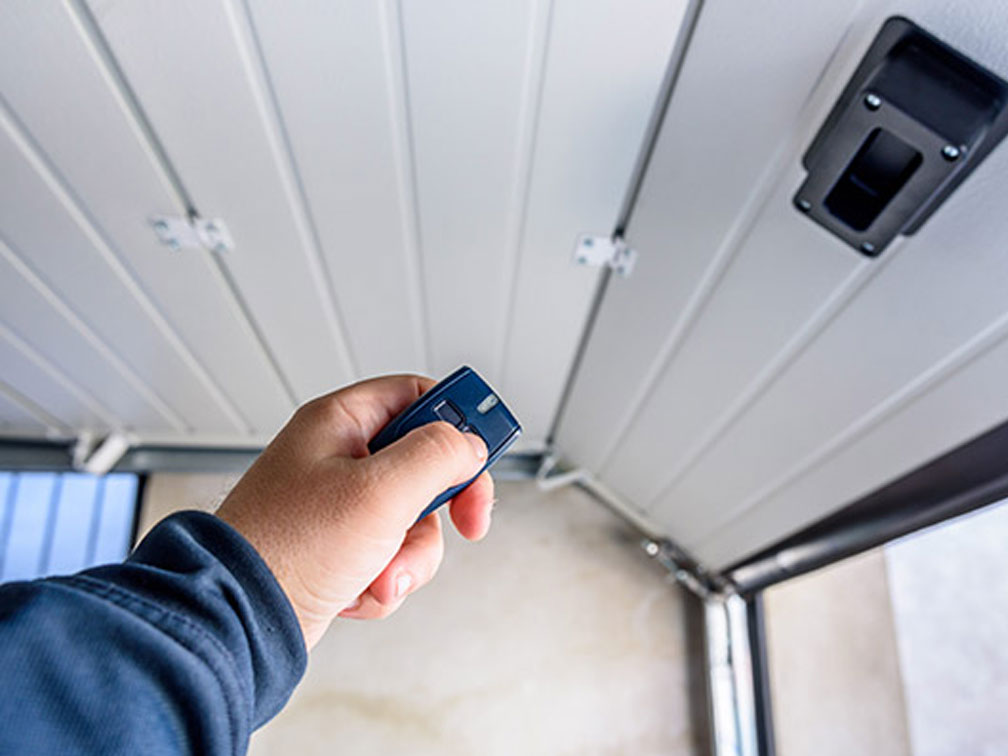How to Insulate your Garage Door
Garage insulation helps in cutting energy bills and preventing street noise. Below are the steps you need to follow if you want to insulate your garage door. Having an insulated garage door will make your home warmer, cooler, and quieter. It also lowers the energy bills, acts as a protective barrier between you and street noise, in addition to that it brightens an otherwise dreary space.
Garage door insulation is one of the easiest DIY project; and it will cost you roughly $200 if you are insulating a two 9-foot-wide doors.
Studies done by many garage door manufacturers confirm that an energy-efficient R-18 insulated garage door can effectively keep your garage about 12 degrees warmer during the winter months and about 25 degrees cooler in summer. This is a very efficient way of reducing energy loss along the insulated walls and ceiling. Of your garage.
A new R-18 garage door costs about $1,400 (the installed price for a two-car garage), so it really doesn’t pay to replace yours based on energy savings alone. You can, however, consider adding insulation, doorstop weather stripping and a new bottom seal to your existing door to gain some savings and comfort. You can complete the entire job in about four hours for less than $200. Just buy the materials from any home center and gather up a utility knife, tape measure, straightedge, saw, dust mask, and a hammer and nails.
Types of Insulation
There are a few insulations types that you can use on your garage door. Any insulation type you choose will increase the energy efficiency of your garage door. Here are the most popular types to apply to the back of garage doors:
The Batt insulation. This flexible insulation, often found stuffed into exterior walls, is commonly made of fiberglass. It’s usually backed by paper or foil, which act as vapor and air barriers. Insulating values are R-3 to R-4 per inch of thickness. Cost is about 40 cents per square foot.
The Foam board insulation. These rigid panels, are typically made from polystyrene, and they provide a high insulating value for relatively little thickness. Panels most often range from 1/2 inch thick (R-3.3) to 1 inch (R-6.5). Foam board often is faced with aluminum or vinyl. ($20 for a 4-foot-by-8-foot sheet that’s 1 inch thick.)
The Reflective insulation. Rigid boards and rolls of reflective insulation have highly reflective aluminum foil applied to one or both sides of insulation materials, such as cardboard and polyethylene bubbles. This type of insulation reflects radiant heat, making it a good insulation choice for garages that heat up in summer or hot climates. Its approximate R-value is 3.5 to 6, depending on the way you apply it. (A 4-foot-by-25-foot roll is $42).
Matching Insulation to Your Garage Door
When planning to insulate your garage door, its important you match the insulation material with your garage door. The goal is to match your garage door to an insulation that’s easy to install and appropriate for your climate.
Steel garage doors: These doors can accommodate any type of insulation. Stuff the flexible insulation in the frames around the panels, with the fiberglass side touching the door. Or squeeze cut-to-fit foam board insulation into the frames.
Wood frame-and-panel doors: Cut and fit rigid insulation into the recesses between the door frames. For extra climate control, install two layers of foam board.
Flat garage doors: Foam board or reflective insulation is the best fit for garage doors without panels. Glue or tape the insulation to the garage door.
The Insulation Kits
Even though buying and cutting insulation isn’t hard, garage door insulation kits make it even easier.
They contain:
Insulation — rolls or boards — cut closer to the size of garage panels than if you bought these yourself, though you’ll still have to trim.
Fasteners or tape to hold insulation in place.
Higher-end kits throw in gloves and/or a utility knife.
Kits to insulate a 9-foot-wide garage door cost $50 to $70.
The Below Steps will guide in your Insulation Process.
Shop for materials
You can buy two types of garage door insulation kits at home centers.
An R-8 vinyl-faced fiberglass batting kit provides a relatively high R-value. (Two examples are the ADO Products Single Garage Door Insulation Kit, No. 1611025, and Owens Corning Garage Door Insulation Kit, No. 500824.) It takes two kits to insulate a typical 16-ft.-wide garage door.
Or you can buy precut R-4 expanded polystyrene (EPS) panel foam online (one choice is the Garage Door Insulation Kit from Cellofoam). Just cut each panel to length and bend and snap it into the horizontal rails on your door. However, at R-4 per inch, EPS has the lowest R-value. If you live in a moderate climate, that may be enough.
If you’re willing to do a lot of precise cutting, you can achieve a higher R-value, up to R-9.8 with 1-1/2-in.- thick foil-faced fire-rated extruded polystyrene (XPS). (Johns Manville CI Max and Dow Thermax are two brands.) Unfaced non–fire rated XPS rigid foam should not be used to insulate a garage door. It’s extremely flammable and when ablaze, yields toxic fumes.
Next, buy enough doorstop vinyl weather stripping to seal the top and sides of your garage door. You’ll also need new vinyl bottom seal to fit your existing track, or buy a new track if yours is damaged.
STEPS TO FOLLOW.
1. Measure, mark and install the retainer pins: Measure to find the spot that’s 12 in. from each edge of the panel and midway between the horizontal rails. Mark the location. Then peel off the adhesive backing paper and press the retainer pin base onto the panel. Install two retainer pins in each panel. Start by washing each door panel with household cleaning spray and rags. Then rinse the areas with clean water and let dry. Next, install the retaining pins.
2. Cut the batting: Roll out the batting with the vinyl side down and mark the cutting lines. Place the batting on scrap plywood. Then compress the insulation with a straightedge and cut with a utility knife. Measure the height and width of each panel and add 1 in. to the length and width when you cut the batting to size for a snug fit.
3. Lock the batting in place: Line up the insulation so it’s centered in the panel and push it against the retaining pin until it punctures the vinyl facing. Then push the retaining cap over the pin until it snaps into place. Panel sizes may differ along the door, so measure each one as you go rather than pre-cutting all the panels based on one measurement. Fit the cut insulation into the panel with the vinyl side facing into the garage. Then secure it to the retaining pins.
4. Repeat the above three steps until all the panels are insulated.
5. Test-fit the doorstop: Place the doorstop against the top and side jambs so the vinyl weather stripping is at a 45-degree angle. Temporarily secure it in place with nails pounded in only partway. Starting at the top of the door, tack the doorstop weather stripping to the top jamb. Mount the side doorstops the same way
6. Readjust to accommodate door movement: Apply pressure to the door to simulate the effect of a strong wind. Then move the doorstop inward to maintain a good seal. The gap may not be the same in every location along the sides, so check it in several spots and readjust accordingly. Then press against the door to simulate how much it might move in strong winds.
7. Readjust the doorstop so it seals against the door even in windy conditions. Then pound the nails in all the way. If the door has too much play to adjust the doorstop properly, or you can see light through the doorstop weather stripping, replace your existing hinges with spring-loaded versions that press the door against the weather stripping at all times.
8. Un-crimp the bottom seal track slots: Jam a fat-blade screwdriver into the crimped area and twist to gently bend out the aluminum track. Repeat on each end of the track. Most steel doors have a track along the bottom to hold a vinyl seal. The vinyl can harden from sun exposure and crack or break off in sections, letting in cold air. Installers usually crimp the slots at each end of the track to retain the seal. Open the crimps and slide out the old seal.
9. Slide in the new bottom seal: Slather some dishwashing detergent onto the slots along the bottom track or spray them with silicone. Then insert the vinyl seal and pull it into place. Cut off the excess vinyl with a utility knife and crimp the ends of the track with a pair of pliers. Then install the new one.
10. Test the door: A properly balanced garage door should stay in place if you lift it part-way and let go. However, insulation adds weight to the door, and that may throw off the balance. If your door falls after you let go of it, hire a garage door service company to readjust the spring tension. Leaving the door in an unbalanced state can damage your garage door opener.
An Important Tip.
Adding any insulation to the garage door will increase the weight of your garage door. The extra weight isn’t usually a big problem if you have 9-foot-wide doors, but still it can strain the opening mechanism of larger garage doors. Your garage door’s spring tension will need to be adjusted, this should be strictly done by a garage door professional.
Call C and M Garage Doors for more information or help – 702-655-3667





